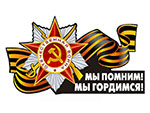In 1939 Ozery became part of the Byelorussian SSR, in 1940 it became the center of the village Council. In the same 1940 the main street was renamed, although the characteristic layout and direction of the streets have survived almost unchanged to the present day. In the center was a market square, which was dominated by the Church. From the square dispersed the streets: Grodnenskaya Street to Grodno, Skidelskaya Street to Skidel, Dvornaya street to the Zadub’e farm. In 1939 Grodnenskaya became the Soviet street, Skidelskaya – the street of the red army, Dvornaya became the Kirov street, the market square, which collected large fair became the Lenin square.
Street names ceased to designate the direction to any locality and became part of state ideology. The street Church was renamed in Krasnopartizansky street, Brewing street became the street of the 1st of May, Cemetery street turned into Pioneer, Starrysky. Only the school street remained the same, where the synagogue and the Jewish school were situated. the Soviet regime also didn’t like the word "town" .The name was abolished and it was then that Ozery became known as the village that was untrue, as there were no Jews after the war, however, before the military events, Ozery was a typical Jewish trade and craft town. More than half of the inhabitants were landless Jews who were selling matches, salt, kerosene, and herring. They sewed good clothes and shoes, were blacksmiths and potters. Rented gardens and sold apples. During the great Patriotic war the Nazis had established a ghetto, where 1370 Jews were herded. 5 March 1943 the Germans and the police officers killed all his prisoners. According to another version, in 1943, all the prisoners were driven on foot in Grodno. Retreating Nazis burned Ozery and witnesses of the fire lived in the village for many years.
Ozersky ghetto was situated within the Grodnenskaya street, Starorybatskaya street and the lake shore. It was surrounded by a fence, height 3.5 m. from the barbed wire that was stretched between the posts from top to bottom every 20 cm Columns were buried a meter into the ground between the sidewalk and the Jewish houses on the Grodnenskaya street and in the middle of the Starorybatskaya street. Now on the place of ghetto there is a private building, and sadly, a memorial sign of any kind is absent
During the occupation, Ozery experienced large losses: asawmill, a Creamery, a mill, pharmacy, market and house of culture were destroyed and ruined. On the eve of the great Patriotic war 4 thousand people lived in Ozery. in 1945 only 1400 people left. 110 people were exported for forced labor in Germany. Among the killed residents of the village were the family of a partisan Constantine Kysel of 5 (father, mother, sister and her husband and daughter) who were burned alive. Partizan Peter A. Volosevich and his son were killed during a RAID in the forest, and his wife was shot on suspicion of helping her husband and son.
The Nazis carried out punitive operations and in nearby villages. In July of 1944 there were buried 72 warriors who liberated Ozery. This is the only reminder of our fallen villagers. Ozery was released on 15 July 1944. during the operation to free Grodno. In the battle 72 soldiers and officers of the Soviet Army were killed, the names of 52 of them remain unknown. During the Second world war two main wooden attractions of the town, the Church of the Mother of God (1679) and synagogue (the end of XVIII century) were destroyed.
Conclusion: According to the Riga peace Treaty of 1921, Ozery became a part of the interwar Polish Republic, belonged to the Grodno region of Bialystok province. In 1939, Ozery became part of the BSSR, since 1940, the center village Council. During the Great Patriotic War, the Nazis had established a ghetto in Ozery; all its prisoners of 1370 were killed. During the Second world war two main attractions of the town — the Church and synagogue were destroyed. The mass grave and a memorial in the local cemetery are the only reminders of the tragic events of those bloody days







